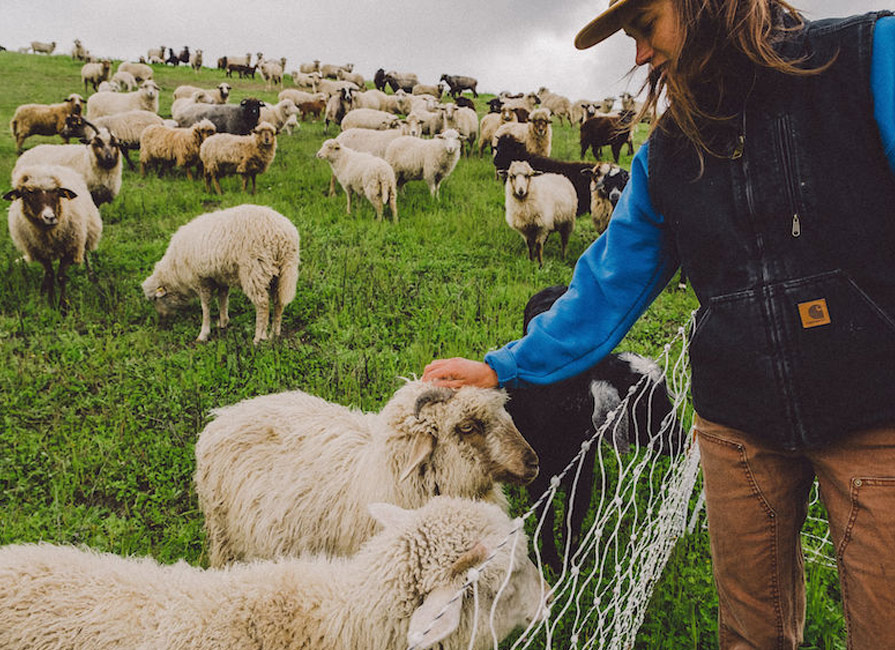One of the key attractions of our Certified Regenerative by AGW program is its practical…

Is Local Always Best?
An astonishing amount of advice is given to shoppers about what food they should eat and where they should buy it. While much of the guidance is sound and reasonable, some of it is wildly inaccurate—or just downright unrealistic.
Unrealistic expectations
A phrase you’ll often hear is: “Before you buy any food you should always visit the farm.” Buying direct from the farm or at a farmers’ market is something A Greener World wholeheartedly encourages. Not only does the food usually represent great value for money—particularly for the quality on offer—but supporting local farms keeps your money circulating in the local economy.
But is it realistic to expect every shopper to have the time and ability to actually visit every farm before they buy any food—let alone the agricultural background to assess what they see when they get there?
While we welcome the growing number of consumers taking steps to understand how their food is produced, the idea that everyone must personally visit a farm before you can trust the food—and that, by implication, the average person has the technical expertise to assess whether a farm meets high-welfare or sustainable production standards—is disingenuous on both counts. This both overestimates the time and resources that consumers have and underestimates the complexity of farming.
A visit to a working farm, particularly where you can speak to the farmer, is a fantastic opportunity and something every schoolchild should experience as part of the curriculum. And you don’t have to have a PhD in animal welfare or environmental sustainability to have an opinion on whether a farm is doing a reasonable job or not. But what does it really tell you about the impact of your food?
Animal welfare expertise
Let’s imagine person visiting a farm and seeing pigs on pasture on a fine summer’s day. By comparison, they may assume this represented an idyllic, high-welfare farm operation. But would this fleeting, untrained assessment really provide enough information for the average person to decide whether or not to buy food from this farm?
Unfortunately, an interest in where your food comes from and a willingness to get your boots dirty isn’t always enough. Let’s take a closer look at those pigs. Are they on pasture in a system where each pig has enough space? Did you happen to see if the farmer provided a wallow and shade from the hot sun? Did the pigs have access to fresh drinking water? What about a diet that meets their nutritional needs depending on their life stage? Are the animals regularly moved to prevent the build-up of disease or parasites? Is there traceability in the supply chain—meaning, can you be sure the meat you’re buying actually came from the farm you’re visiting, and not from a cheaper industrial supplier? This is not meant as a criticism of consumers or farmers; it’s just that farming is a complex, specialized profession—just like a doctor or an accountant—and the expertise needed to assess livestock and environmental management is not something you will pick up on a family walk around the farm.
Is ‘local’ always best?
Similarly, while making the effort to support local farmers and buying ‘local’ products is great, it’s worth remembering that the term ‘local’ does not automatically guarantee good farming practices. (In fact, the term ‘local’ offers no guarantees whatsoever—for more on what food labels really mean check out our guide here.) Buying locally produced food might mean you’re more able to speak to the farmer or visit the farm, but this may not necessarily help consumers make truly informed decisions.
Finally, if we really care about sustainability, do we really want every single consumer to jump in a car (if they even have one) and burn all that gas driving out to the farm each weekend to check on the animals before every food purchase? And what about coffee? Flour? Different foods grow in different regions, and few eaters live within reach of every dietary staple.
Certification matters
So what is the answer? We need both. A visit to a local farm—and the opportunity to speak to the farmer—will provide a good idea of the kind of farming that is going on, and for many, a better understanding of agriculture. A Washington Post report from 2017 revealed that seven out of 100 American adults think chocolate milk comes from brown cows, while over 40% of California 4th-6th graders didn’t know hamburgers came from cattle and 30% didn’t know cheese was made using milk. Farms that open up to the public are a fantastic educational resource for the family—and are desperately needed. But farm visits alone won’t transform our food system or deliver meaningful sustainability at scale.
If you really want to be sure you’re buying meat, eggs and dairy products from farms where high welfare and sustainable management always come first, you need to look for a trusted certification. Buying food that displays an AGW logo means you can be sure the farm is audited and scored against a comprehensive list of standards by an experienced farm auditor at least once a year. We also vary the time of audit from year to year—and even carry out some unannounced or “surprise” audits—so we can see the farm and the animals in different seasons and weather conditions.
With farms across the U.S. and Canada, and in Europe and South Africa, A Greener World visits every farm to provide the transparency that consumers and farmers depend on. So whether it’s at the grocery store, online or at the farmers’ market, you can rest assured A Greener World’s labels are the ones you can really trust.


